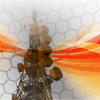
Microwave Path Engineering Fundamentals [SP6700]
The course is designed to help the student build subject matter expertise in Microwave path engineering with a balanced mixture of both theory and real world examples. Microwave Path Engineering Fundamentals takes you through the basic elements of a microwave path, the role propagation plays in the design, the elements of good path design, regulatory considerations and more. v2
Estimated study time: 5 hours 30 minutes
Webcast duration: 2 hours 37 minutes
Languages
The webcasts for this course are available in the following languages:
plus additional languages available for assessments.

Audience
This course is intended for the technical or non-technical telecommunications professional who is interested in learning more about the design and licensing of point-to-point microwave communication systems. The content looks at all the elements that need to be considered from the initial proposal through implementation. The course is designed to ensure that the student understands all aspects of engineering a link, not only the components involved but also critical design considerations, interference concepts and regulatory considerations.
Pre-requisite experience
No pre-requisite experience is required to take this course but as the subjects covered are technical, having some prior knowledge of microwave might be advantageous.
Objectives
Understand the components of a microwave path and how new technology is changing the way components are being amalgamated together to offer higher performance
Learn about the areas of commerce that microwave is being used for and how these links are time critical
Comparison of transmission, data rates, coding and modulation
Look at alternative radio configurations, benefits and drawbacks
Discover how modulation and ACM switching can maintain a link even in adverse conditions
Cover the typical choices of transmission line and differences between them
Help identify the differences in antenna types, effects of shrouds and radomes
Learn about the factors that can influence antenna gain
Look at the ETSI and FCC standards and the RPEs of antennas
Understand the theory of propagation, and look at how adverse conditions can affect the signal
Discuss Fresnel zones, look at terrain and how obstacles can interfere with the quality of transmission
Investigate K factor and how atmospheric conditions affect propagation
Learn about the effects of fading, including causes and remedies
Discuss the regulatory bodies and selection of frequencies to comply with local regulations
Investigate microwave paths and help understand losses as a result of reflection, absorption and diffraction
Understand path reliability and the influences on the link that can cause problems in different regions of the world due to various climatic conditions
Learn about rain outage and associated models
Understand line-of-site surveys and why they should be completed
Learn about interference concepts and how to minimize the effects to microwave systems
Understand frequency planning, responsibilities and submission of PCNs
Understand FCC licensing requirements
Key Topics
Microwave path components
Planning and congestion Issues
Radio
Transmission and data rates
BER and threshold
Adaptive coding and modulation
Transmission lines - coaxial vs. waveguide and losses
Antenna selection, gain and beamwidth
Shrouds and radomes
ETSI and FCC antenna standards
Standards and discrimination
Polarization and RPEs
RF propagation including reflection, diffraction, scattering , and absorption
Fresnel zones
K Factor and calculations
Path clearance and fading
Path reliability
Vigants and ITU methods
Composite fade margin
Climate factor and rain outage
Space diversity
Path design and field survey work flow
Path survey and terrain data
Interference analysis, discrimination, C/I objective, C/N, T/I
Frequency planning and avoiding conflicts (ex. bucking)
Prior coordination notices
Licensing and application filing
How will I learn?
You will study this course online in a self-paced format. The course is made up of a number of webcast lessons and online multiple choice assessments giving immediate feedback. The course content is supplemented by some PDF support material. It is highly recommended that the student augment their learning with real world design, preferably with the help of experienced colleagues or mentors.
Successful completion will require
Any level of pass in the accumulative overall assessment score.
Is this the right course for me?
If you have an interest in Microwave Path Engineering and need or want to understand the concepts involved to design a successful link, then this course is for you. The course does look at some advanced topics related to microwave path interference and reliability, so having a basic understanding of the math involved in this medium might be helpful.
Upon successful completion you will
Receive a course certificate that may be self-printed and by completing this course you can request a photo ID badge.
Course information:
Certificate valid for 3 years
Estimated study time: 5 hours 30 minutes
Webcast duration: 2 hours 37 minutes
Course Benefits
- Learn at your own pace
- Effective learning
- Learn on the go and on-site
- Cost effective
- Consistent training globally
- Access latest material